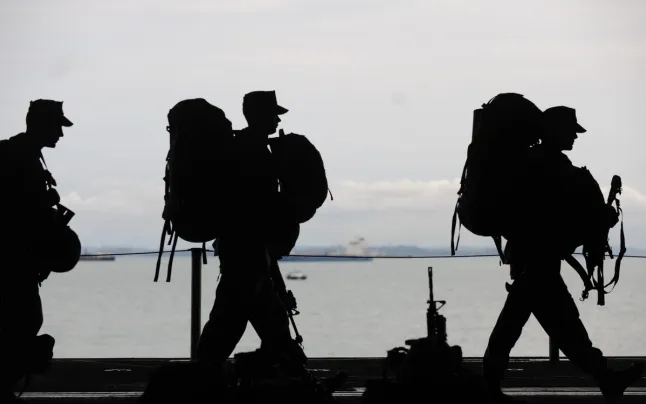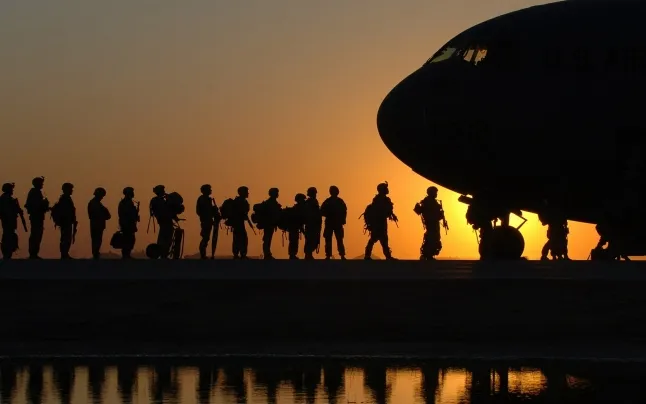Ararat claims that the international community has left Armenia alone in the territorial dispute with Azerbaijan
After more than forty days of combat, the two countries reached an agreement mediated by Russia to end the war.
‘Armenia has been left alone’. This is how Sarkis Hakobyan, president of Ararat, the Association of Armenians of Catalonia, explains the international community’s stance in the conflict between Armenia and Azerbaijan, a war with over a thousand deaths, which has come to an end with a ceasefire agreed between the two states and mediated by Russia. The agreement came about when the Azerbaijani forces approached the centre of the country and had occupied the city of Shushi, a few kilometres from the capital of Nagorno-Karabaj, Stepanakert.
The president of the Catalan association recognizes that the final resolution of the conflict has been ‘a hard blow’ for the Armenian people. In any event, he assures that ‘we are not losing hope,’ as the signed document only talks about the ceasefire and ‘does not specify the status quo of the Republic of the Artsakh’. Hakobyan reiterates that the international community has remained too much on the sidelines. ‘The entry of Russian troops will help, but during the war it has acted in the same way as France and the United States,’ he explains.
The fighting started on September 27 with an offensive of the Azeri forces, with military support from Turkey. Progressively, the Azerbaijani army occupied the territories of the Artsakh. The agreement has been signed by the president of Azerbaijan, Ilham Aliev; the prime minister of Armenia, Nikol Pashinian, and the Russian president, Vladimir Putin.
Hakobyan admits that the Armenian community feels ‘very angry for the loss of territories and for the support Azerbaijan has received from Turkey, Israel and from Syrian and Libyan mercenaries.’ According to him, it has been a struggle ‘of one small nation against three states and it was impossible to hold out any longer.
’‘The situation is very complicated but Armenia has announced they hope to get back on the negotiating track to deal with the future of the republic,’ Hakobyan explains. ‘Now a new history begins for Armenia after the defeat,’ he says, ‘we hope that rebirth and constructive work to avoid past mistakes will return,’ he adds.
Condemnation by the Catalan Parliament
During the height of the conflict, the Catalan Parliament condemned the attacks by the Azerbaijani armed forces. Through an institutional declaration, the Parliament called for a peaceful resolution endorsed by the international community, taking into account respect for the majority will of the citizens of Artsakh.
Various Armenian associations in Catalonia also called for international support in many popular street demonstrations to stop the conflict and to denounce the attacks initiated by Azerbaijan in the area.
From the Association of Armenians of Catalonia they have pointed out that ‘in Catalonia a lot of work has been done, we have even received the support of the Parliaments of Catalonia and the Basque Country as well as of deputies and senators.’ Despite this, they regret that the ‘Spanish government has continued to sell arms to Azerbaijan and Turkey.’
Loss of three thirds of the territory
The ceasefire agreement specifies that Armenia undertakes to leave all Azeri territories around Nagorno-Karabakh until 1 December. In addition, Azerbaijan will maintain control of the territories conquered within Nagorno-Karabakh, including the city of Shushi. This withdrawal is equivalent to the loss of approximately two-thirds of the territories that hitherto constituted the Republic of Artsakh.
Armenia Prime Minister Nikol Pashinian described the agreement as painful for him and his people, as it enshrines the military victories achieved by Azerbaijan after six weeks of fighting. The Armenian political and military authorities explained that the agreement was the only option for ensuring that the Armenian presence in Nagorno-Karabakh disappeared, in view of the far superior Azeri military advance in the air.
So as to ensure peace and the free movement of people and goods, the Russian army will deploy 1,960 soldiers in the area, which will guarantee the security of various corridors connecting the Artsakh with Armenia and Azerbaijan. Over the next three years, a new road will be built which, through this corridor, will facilitate transit between the two territories.
The presence of Russian soldiers is planned for five years, with automatic extensions for successive five-year periods, provided that neither side requests the end of this provision.
Return of refugees
The agreement also leaves in writing that all those displaced by the conflict will be allowed to return to their homes, which they will do under the protection of the United Nations Refugee Commission (UNHCR). There will also be an exchange of prisoners and the bodies of military personnel who have fallen in combat. Armenia undertakes, under Russian supervision, to ensure the security of a transport corridor between the Azerbaijani region of Nakhchivan and the rest of Azerbaijan.
This corridor allows, for the first time, direct connections between Turkey and Azerbaijan through Armenian territory. From the outset, it is difficult to imagine that what is left of the Republic of the Artsakh could ever function normally again. In any case, the ceasefire agreement does not speak at all of the status quo of the Republic.
The vast majority of the population consider themselves ethnically Armenian and practitioners of the Armenian Orthodox Church. In fact, Artsakh functions as an independent republic, though it has never been recognised by any UN member state.
Most of the Armenian population, estimated at over 100,000, has already fled the Artsakh, which is completely isolated from Armenia. If the Artsakh has so far needed assistance from Armenia in various respects, it now needs it even more, in view of the physical destruction the war has brought about. The most important thing for Armenia will be the five-kilometre corridor connecting the region’s capital Stepanakert with Armenian territory.
Resignation of the Artsakh government and unrest in Armenia
The agreement was seen with resignation in the government of the Republic of Artsakh. The President himself, Arayik Harutyunyan, acknowledged in a Facebook message that ‘considering the current state and avoiding future human losses, I consent to stop the war.’
Harutyunyan also expressed his condolences and ‘pride in the families of the victims and our entire nation.’ He said the decision was made jointly with the leaders of the different political forces that make up the Artsakh parliament.
The reaction has been quite different in Yerevan, capital of Armenia, where for two consecutive days hundreds of demonstrators protested angrily against the agreement, which they consider a betrayal of the country’s prime minister, Nikolai Pashinian.
Upper Karabakh is a region inhabited by Armenians that Stalin included within Azerbaijan. When the Soviet Union disintegrated, it proclaimed itself independent. With the help of neighbouring Armenia, it was able to repel the Azeri attack and expand its territory in a war which caused 30,000 deaths and ended in a ceasefire in 1994. Since then, and until the beginning of this conflict, all the negotiations for a definitive peace had failed









Add new comment